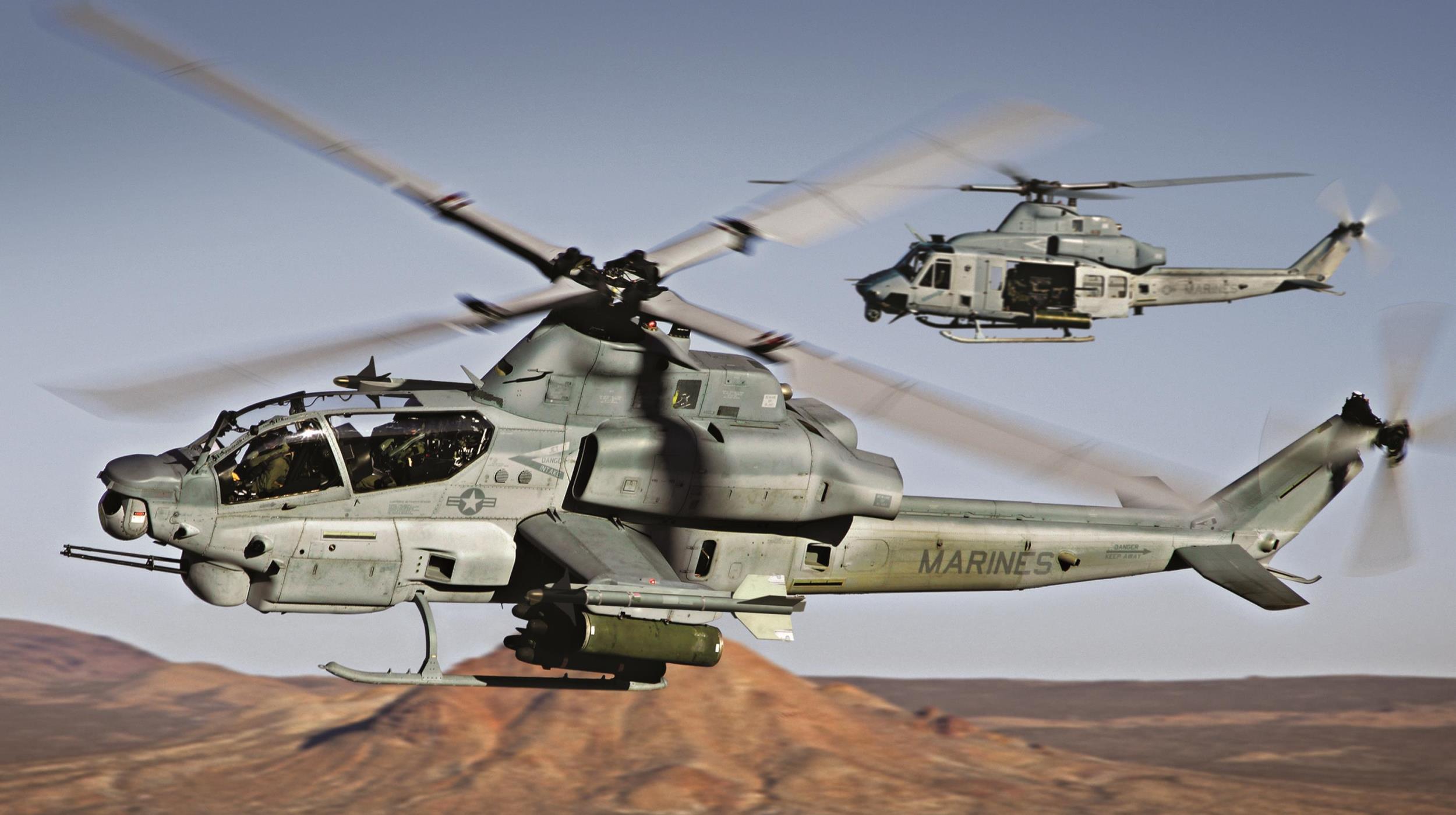The Bell AH-1Z Viper is an American twin-engine attack helicopter, based on the AH-1 Cobra, the first ever attack helicopter. This helicopter is built to meet the expeditionary requirements of the United States Marine Corps, as part of the H-1 upgrade program. The AH-1Z features a four-blade, bearingless, composite main rotor system, uprated transmission, and a new target sighting system. It has improved survivability and can find targets at longer ranges and attack them with precision weapons. The latest AH-1Z Viper is a result of H-1 helicopter upgrade program for the US Marine Corps, that was launched by the US Government in 1996. The AH-1Z Viper was developed alongside the UH-1Y Venom utility helicopter under the same program. The AH-1Z, one of the latest members of the prolific Huey family, is also called “Zulu Cobra”, based on the military phonetic alphabet pronunciation of its variant letter.

Bell AH-1Z Viper blades are made of composites, which have an increased ballistic survivability, and there is a semiautomatic folding system for storage aboard amphibious assault ships. Its two redesigned wing stubs are longer, with each adding a wingtip station for a missile such as the AIM-9 Sidewinder. Each wing has two other stations for 2.75-inch (70 mm) Hydra 70 rocket pods, Advanced Precision Kill Weapons System guided rockets (APKWS) or AGM-114 Hellfire (up to 16) quad missile launchers. The Viper can be also fitted with AGM-114F Hellfire anti-ship missiles, free-fall bombs, including the Mk.77 incendiary bombs. The AN/APG-78 Longbow fire control radar can also be mounted on a wingtip station. Also there is the M-197 20 mm three-barrel cannon. The AH-1Z has survivability equipment including the Hover Infrared Suppression System (HIRSS) to cover engine exhausts, countermeasure dispensers, radar warning, incoming/on-way missile warning, and on-fuselage laser spot warning systems.

The Bell AH-1Z Viper model’s integrated avionics system (IAS) has been developed by Northrop Grumman. The system includes two mission computers and an automatic flight control system. Each crew station has two 8×6-inch multifunction liquid crystal displays (LCD) and one 4.2×4.2-inch dual function LCD. The communications suite combines a US Navy RT-1824 integrated radio, UHF/VHF, COMSEC and modem in a single unit. The navigation suite includes an embedded GPS inertial navigation system (EGI), a digital map system and Meggitt’s low-airspeed air data subsystem, which allows weapons delivery when hovering. The Lockheed Martin Target Sight System (TSS) provides target sighting in day, night, or adverse weather conditions. The system has various view modes and can track with FLIR or by TV. The crew are equipped with the Thales “Top Owl” helmet-mounted sight and display system. The Top Owl has a 24-hour day/night capability and a binocular display with a 40° field of view. Its visor projection provides forward looking infrared (FLIR) or video imagery.

The Bell AH-1Z Viper has essential changes in propulsion. It is powered by two General Electric T700-GE-401C turboshaft engines and has uprated transmission. One of the main external differenced from the AH-1W is a composite 4-bladed main rotor, instead of the previous 2-bladed rotor. It reduced vibrations by up to 70 percent. It is worth noting that a 2-bladed rotor was a distinctive feature of all previous Bell helicopter models. However due to these changes flying characteristics improved a lot. The Bell AH-1Z Viper’s new bearingless, hingeless rotor system has 75% fewer parts than that of four-bladed articulated systems. Fuselage of the helicopter and external components were coated to avoid corrosion during prolonged service at sea. These helicopters typically operate from amphibious assault ships. The commonality gained between the AH-1Z and the UH-1Y (approximately 85 percent) is expected to significantly reduce life-cycle costs and the aircraft’s logistical footprint, while increasing the maintainability and deployability.















